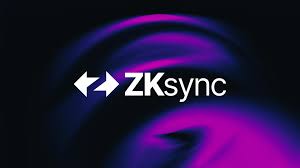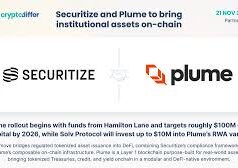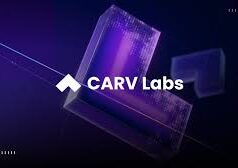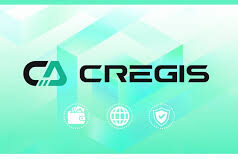ZKsync, a leading Ethereum Layer-2 scaling solution powered by zero-knowledge proofs, has been making waves in the blockchain space. Its latest move? A token distribution proposal that’s got the crypto community buzzing. The plan is to allocate 8.5 million ZK tokens to fund the salaries of ZKsync Guardians over the next two years, starting from the governance launch in September 2024. This isn’t just about paying the bills—it’s a bold step toward strengthening decentralized governance and ensuring the platform’s long-term stability. Let’s unpack what this proposal means, how it fits into ZKsync’s vision, and why it’s a big deal for the ecosystem.
The Heart of the Proposal
At its core, the ZKsync token distribution proposal, detailed in a recent announcement, aims to support the Guardians, a key group within ZKsync’s governance framework. These Guardians are responsible for overseeing protocol upgrades, ensuring security, and maintaining the integrity of the network. Think of them as the stewards of ZKsync’s decentralized ethos, working to keep the system fair, transparent, and robust. Allocating 8.5 million ZK tokens—valued at roughly $340,000 at a token price of $0.04, according to some estimates—shows ZKsync’s commitment to rewarding those who keep the network ticking.
This isn’t a one-off gesture. The proposal, set to run from September 2024 to September 2026, reflects a long-term strategy to professionalize governance roles. By compensating Guardians with ZK tokens, ZKsync ensures that those steering the protocol are incentivized to act in the community’s best interests. It’s a move that balances decentralization with accountability, a tricky tightrope in the blockchain world.
Why Governance Matters
Decentralized governance is the backbone of any successful blockchain project. Without it, you risk centralization, where a few powerful players call the shots, undermining the very principles crypto stands for. ZKsync’s governance model involves three key bodies: the Token Assembly, the Security Council, and the Guardians. The Token Assembly, made up of ZK token holders, votes on proposals like this one. The Security Council focuses on technical audits and protocol safety. The Guardians, meanwhile, act as a bridge, ensuring proposals align with ZKsync’s mission while maintaining community trust.
Funding the Guardians’ salaries with ZK tokens isn’t just about paying people—it’s about aligning incentives. By tying compensation to the native token, ZKsync ensures Guardians are invested in the platform’s success. If the network thrives, so does the value of their tokens. If it falters, they feel the pinch. This setup fosters a sense of ownership and responsibility, which is critical for a project handling over $750 million in total value locked.
The Bigger Picture: ZKsync’s Token Strategy
To understand this proposal, we need to zoom out and look at ZKsync’s broader token distribution strategy. The ZK token, with a total supply cap of 21 billion, is designed to fuel governance, pay network fees, and drive ecosystem growth. According to ZK Nation, 29.27% of the supply is controlled by the Token Assembly for community-driven initiatives, 19.9% goes to ecosystem development, 17.5% was distributed via a one-time airdrop, and the rest is split between investors and Matter Labs’ team, with lock-up periods until 2028.
The 8.5 million ZK tokens for Guardians come from the Token Assembly’s allocation, showing how ZKsync is leveraging community governance to fund operational needs. This proposal also uses ZKsync’s unique “capped minters” system, where tokens are minted just-in-time rather than all at once, reducing treasury bloat and giving recipients more control over when tokens hit the market. It’s a smart way to avoid the pitfalls of traditional token dumps that can tank prices.
What’s Driving This Move?
So, why now? ZKsync’s been under pressure to keep its ecosystem competitive. Recent data shows a decline in key metrics: daily transactions have dropped 89% from a peak of 1.75 million, and DeFi total value locked has slid from $190 million to $79 million. The Guardians’ funding could be a strategic play to bolster governance and, by extension, restore confidence in the platform. Strong governance can pave the way for more proposals like the ZKsync Ignite Program, which recently allocated 325 million ZK tokens to boost DeFi liquidity.
There’s also the broader context of ZKsync’s challenges. The ZK token price took a 21% hit after a controversial airdrop in June 2024, with some recipients selling off their tokens en masse. Add to that a $5 million airdrop exploit and a lawsuit against Matter Labs for alleged tech theft, and it’s clear ZKsync is navigating choppy waters. By prioritizing governance funding, ZKsync is signaling it’s serious about stability and community trust.
Looking Ahead: The Road to 2026
What does this proposal mean for ZKsync’s future? For one, it sets a precedent for how blockchain projects can professionalize governance without sacrificing decentralization. If Guardians are well-compensated and aligned with the community’s goals, they’re more likely to push for upgrades that benefit users—like better interoperability or lower transaction fees. The proposal’s two-year timeline also gives ZKsync breathing room to refine its governance model as the Elastic Chain ecosystem grows.
That said, there are risks. Token-based compensation can lead to volatility if Guardians sell their ZK tokens in bulk, especially given the token’s recent price struggles. The community will need to keep a close eye on how these tokens are managed. Plus, with 99.73% approval for similar proposals in the past, there’s a chance governance could become too cozy, lacking the critical debate needed for true decentralization.
Closing Reflections: A Step Toward Maturity
ZKsync’s decision to allocate 8.5 million ZK tokens to Guardian salaries is more than a budget line item—it’s a statement of intent. By investing in its governance structure, ZKsync is laying the groundwork for a more resilient, community-driven network. This move shows that blockchain projects can balance operational needs with decentralized ideals, even in a bearish market. As ZKsync continues to innovate with zero-knowledge tech and expand its Elastic Chain, the success of this proposal could be a bellwether for how Layer-2 solutions evolve. Will it pay off? Only time will tell, but for now, ZKsync is betting on its Guardians to steer the ship.
Sources:
- CoinWorld via Gate.com
- ZK Nation Documentation
- CryptoBriefing
- Binance
- Crypto.news
- PanewsLab
- ZK Nation Blog




























The Elastic Network sounds cool, but I’m lost on how it ties to governance
Think this’ll push ZK past its $0.32 high? Hope the community steps up. Killer article, got me ready to join the Token Assembly!
But will this make ZK’s price move past $0.06?
I’m kinda new to ZKsync—what’s the deal with these 8.5M tokens?
Man, ZKsync’s going hard with 8.5M ZK for governance!
’m all for community control, especially with that Ignite program dropping 300M for DeFi
Are they just giving them out to voters or what?
That’s like $510k to let the community call shots.